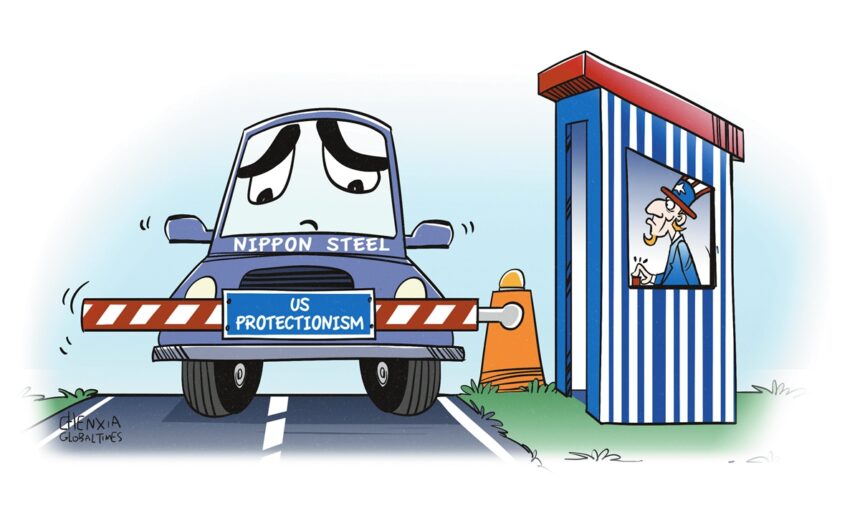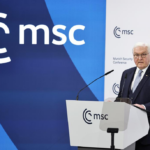The latest developments surrounding Nippon Steel’s investment in US Steel have again brought the competitiveness of the US steel industry back into the spotlight.
Japanese Prime Minister Shigeru Ishiba said on an NHK debate program on Sunday that Nippon Steel’s planned buyout of US Steel will be an investment rather than a simple takeover, echoing US President Donald Trump’s earlier remarks.
Trump said on Friday that Nippon Steel’s $14.9 billion bid for US Steel would take the form of an investment instead of a purchase, Reuters reported.
While the deal is portrayed as a partnership to enhance competitiveness, given the background of the meeting between the top leaders of the US and Japan, it is impossible to ignore that the potential collaboration between the US and Japanese steel industries could also carry a geopolitical motive of creating a counterweight to China’s steel industry. However, this alliance, rooted in protectionism and short-term fixes, is unlikely to achieve its intended goals due to the weaknesses of the US steel sector.
As Trump met with Ishiba on Friday, America and Japan projected unity in their efforts to counter China on the economic and security fronts and reaffirmed their commitment to a “free and open” Indo-Pacific, the South China Morning Post reported on Saturday.
The US steel industry, once a cornerstone of its economic strength, has been in decline for decades, struggling to compete with the efficiency, scale and technological advancements of China’s steel sector. In response, the US government has resorted to a mix of policy support, trade protectionism, and now, foreign investment.
Trump’s efforts to attract Japanese investment are a clear manifestation of this intent. By joining forces with Japan, the US may hope to quickly boost the capabilities of its steel industry, leveraging Japan’s capital and technology as a shortcut to revitalize the US steel sector and counter the competitive edge of China’s steel industry. Nippon Steel is the world’s fourth-largest steelmaker by volume, while US Steel ranks 24th, according to a 2023 tally by the World Steel Association.
Nevertheless, the problems facing the US steel industry run far deeper than a simple investment can fix. Outdated industrial structures, low productivity, high labor costs and an overreliance on protectionist policies have eroded the industry’s competitiveness. These issues require comprehensive, long-term solutions, not quick fixes or geopolitical maneuvering.
Japan’s deeper economic integration with the US, coupled with its alignment with US industrial policies aimed at decoupling from and competing with China, is likely to harm its economic and trade relations with China. During his visit to the US, Ishiba’s proposal for a “new golden era” was largely diplomatic rhetoric, as he failed to secure substantial economic commitments from Trump, particularly on tariff issues. Trump’s “America First” policy means that even allies may struggle to benefit, and Japan’s cooperation with the US on China-related matters could result in a loss of economic interests in China. Following his visit to the US, Ishiba’s decision-making space, both domestically and internationally, has become more constrained, making it increasingly difficult for Japan to strike a balance between the US and China.
Some may pin high hopes on the investment by Nippon Steel, but in reality, the improvement of competitiveness in the American steel industry is not something that can be resolved with just one investment. Nippon Steel’s involvement is unlikely to bring about the transformative changes needed to revitalize the US steel sector.
In this context, the US-Japan alliance in steel is unlikely to pose a significant challenge to China’s steel sector. China’s steel industry has achieved unparalleled scale and efficiency through decades of investment in technology, infrastructure and global supply chains.
Data from the China Iron and Steel Association showed the proportion of steel used in China’s manufacturing industry increased to 50 percent in 2024, up from 42 percent in 2020, the Xinhua News Agency reported. Chinese steel companies have also made significant strides in green technologies, positioning China as a leader in sustainable steel production.
It is a misguided attempt for the US to leverage Japan’s resources to counter China’s competitiveness in the global steel industry. While it may provide a temporary boost, without focusing on the real problems, it cannot address the structural weaknesses of the US steel sector or match the scale and efficiency of China’s steel industry.













